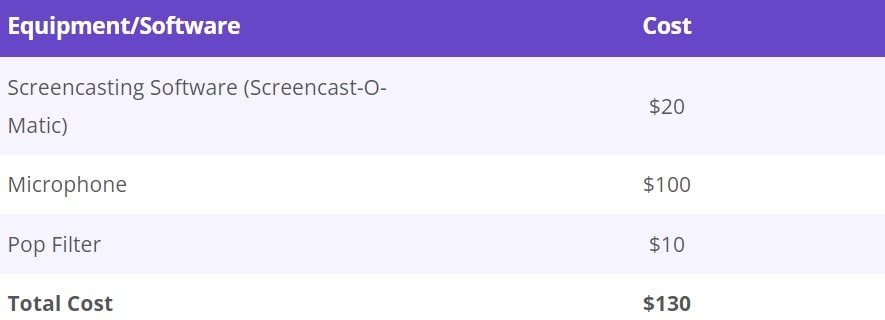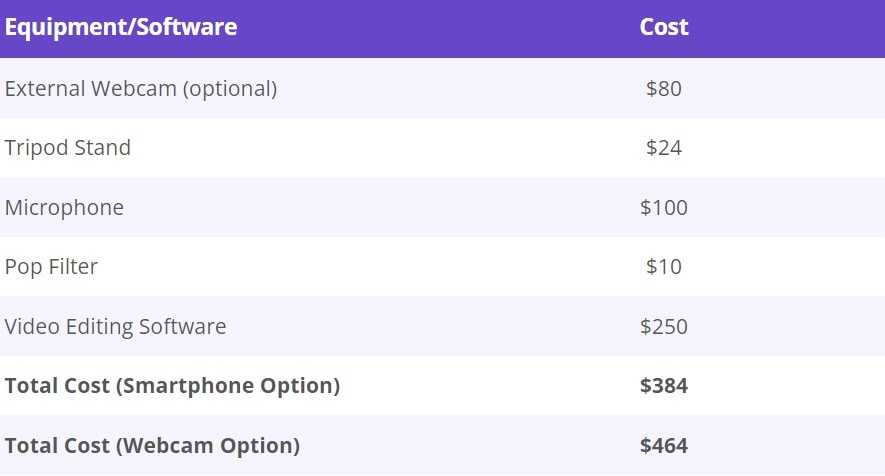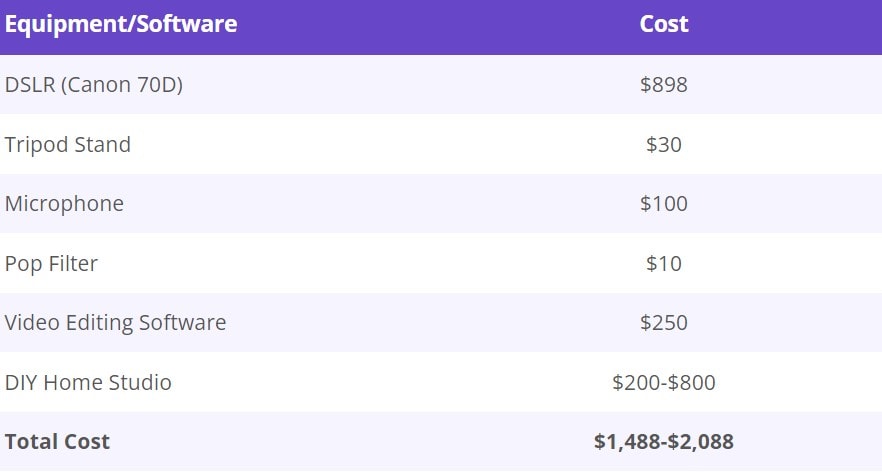This article will help you figure out how much does it cost to create an online course if you want to establish a course business.
Writing course content, recording course videos, and putting your course online are all part of the process of creating a course.
You must make multiple selections at each phase, making estimating the cost of establishing an online course a difficult undertaking.
So we decided to conduct a thorough cost analysis, and we discovered that publishing an online course can cost anything between $140 and $10,770.
The real cost, however, is determined by a number of factors that we’ll go over in-depth later in this article.
Which LMS platform is right for you? This article will explain it more
What Does the Cost to Create an Online Course Depend On?
1. Creating Course Content
The first step in the course design process will be to create content for your course. Let’s look at the many sorts of content you would need to develop to estimate the cost at this stage:
- Written content for course videos, PDFs, PowerPoint slides, and websites, among other things.
- Slides for video presentations
- Graphics and branding assets for your course materials
In terms of video material, most online courses are between 2 and 8 hours long, therefore we’ll base our calculations on that assumption.
To begin, we’ll calculate the cost of the content writing portion of the project, which includes course videos, PDFs, and presentation slides.
It will clearly not cost you anything if you develop all of the content yourself. And while most first-time creators don’t outsource this aspect, let’s take a look at the potential expenditures if you do.
Let’s start by figuring up how many words you’ll need to outsource.
A 60-second video script will typically have 120 words. So, for screenplays for 2-8 hours of video content, the total word count will be 14,400-57,600 words.
Assume that the course has one PDF page for every 15 minutes of video content. For 2-8 hours of video footage, that’ll be 8-32 pages.
With 300 words per page of material, the word count for PDF support resources will range from 4,800 to 19,200 words.
If you’re making presentation-style videos, 30 slides for an hour of video is a common approach. And, because a presentation shouldn’t have too much text, 30 words for each slide is a decent estimate.
As a result, for presentation-style videos, you should expect to have 1,800-7,200 words of text on slides.
Let’s look at the overall word count you’ll need to outsource for courses ranging from 2 to 8 hours in length, including all of the following headings.
As you can see, a 2- to 8-hour course will contain 21,000 to 84,000 words, which includes video scripts, course PDFs, and presentation slides. If your course does not include presentation-style videos, the number will be slightly lower.
Let’s now assess the entire cost of hiring a freelance writer to generate this material.
You may anticipate a freelance writer to write 500 words in an hour if you provide a clear outline and comments at every step, plus you can add 20% more time for revisions.
We looked into the typical fee for a copywriter on Upwork, and a competent freelancer can be found for $40 per hour.
3. Setting Up Your Course
Once you’ve completed your content, you’ll need to publish it to an online course platform to begin selling it.
You may now choose from a number of online course platforms, but Thinkific, in my opinion, provides the best value for money for a beginner.
The platform includes sophisticated learning and engagement capabilities, as well as unlimited video hosting and technical support.
Furthermore, Thinkific allows you to create a website and accept payments, eliminating the need for a separate website builder and shopping cart.
The Thinkific Basic Plan is $49 per month, supports unlimited students, and includes the majority of the tools you’ll need.
However, if you require more sophisticated services such as communities or life lessons, you must subscribe to its Pro Plan, which costs $99 per month.
The ability to create sales funnels and use email marketing to promote your course is something Thinkific does not have. For the same, you’ll require additional tools.
For example, you’ll need an email marketing service like ConvertKit (which starts at $29 per month) and a blogging platform like WordPress (which costs at least $20 a month).
Another alternative is to use an all-in-one platform such as Kajabi, which allows you to create sales funnels and send emails. Kajabi’s monthly pricing starts at $149.
Although both Thinkific and Kajabi will provide hosting, you will still need to purchase a domain name for your course website. A domain name can be purchased for $10 from a domain registrar such as NameCheap.
Despite the fact that both platforms are incredibly user-friendly, you may still want to hire someone to put up your course and sales page.
15 hours is a decent estimate in my experience, and you can easily find an experienced freelancer who will do this for you for $35 per hour. As a result, you should budget $525 for the work of building up your course and sales page.
With this in mind, let’s take a look at all of the expenditures associated with creating an online course.
As you can see, your course platform and associated tools will set you back anything from $100 to $149 per month. This is the bare least; depending on your specific tech stack, you may wind up paying much more.
In addition, if you prefer to outsource the course setup, you need a budget of $535.
We didn’t touch the marketing budget in this article because it was out of scope, but you should prepare for it and set aside money for it.
Get a Huge Discount On the greatest LMS platform
Quick Links:









